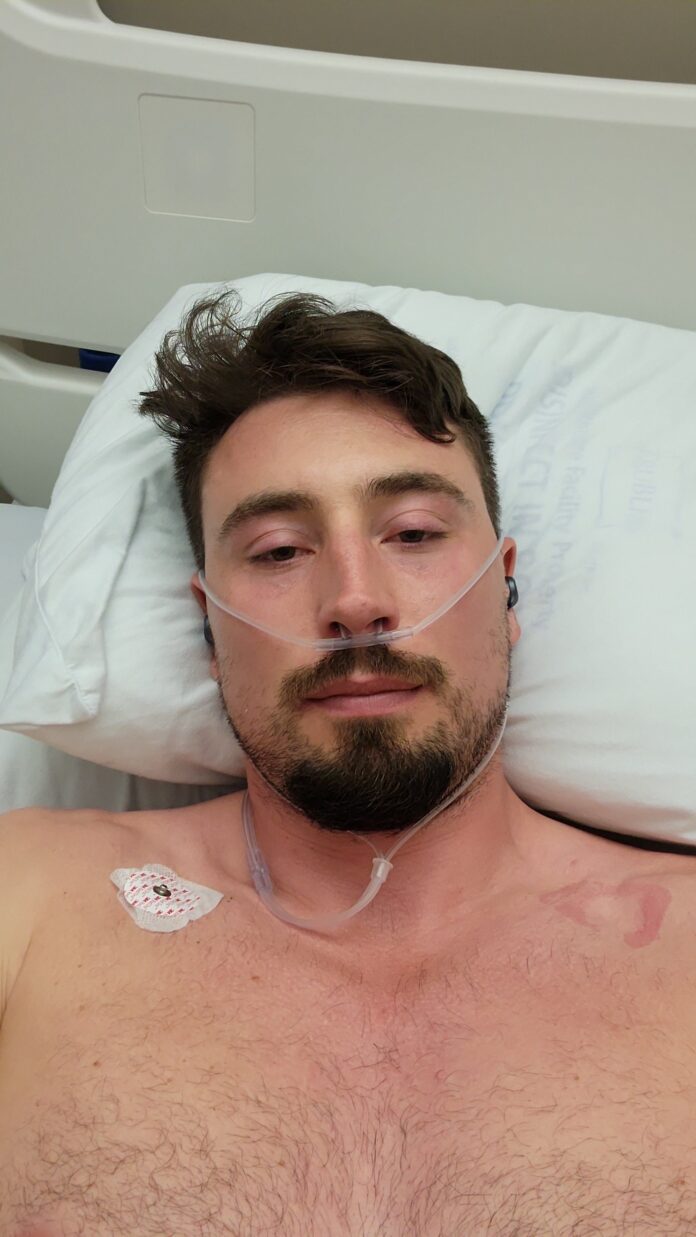Olympic gold medallist Alex Kopacz may be used to being out of breath when pushing a bobsled, but last year after he was hospitalized for COVID-19, he experienced a very different kind of breathlessness.
He was put on oxygen for two months and experienced a number of other health setbacks in the months following his COVID-19 infection, including blood clots in his lungs and throughout his body.
“It was hard to breathe and pretty much it was just going to be a matter of time to see if my body was going to heal from it,” Kopacz said.
It took him almost four months before he was back on his feet and breathing normally again. But without even an official diagnosis of so-called long COVID, the then-31-year-old didn’t have answers about what was happening to him.
That’s how he became involved in a new Canadian research trial looking at patients suffering from post-COVID syndrome — a study that has identified a potential key culprit causing some people to continue experiencing breathing issues months after contracting COVID-19.
A team of researchers based at five centres across Ontario have zeroed in on a microscopic abnormality in the way oxygen moves from the lungs and into the blood vessels of long COVID patients in their trial.
This abnormality could explain why these patients feel breathless and are unable to perform strenuous activities, says lead researcher Grace Parraga, Tier 1 Canada research chair in lung imaging at Western University’s Schulich School of Medicine & Dentistry.
“Those feelings of breathlessness are completely consistent with our finding that we’re not moving the oxygen as efficiently as we should,” she said.
Many long COVID sufferers have been stumping doctors as to what’s wrong with them, because routine clinical tests and chest exams come back with normal readings.
New Brunswick nonprofit says long-COVID referral numbers increasing – Jun 17, 2022
“It’s very exciting for us to actually find something that’s wrong — that it’s in the patient’s lungs and not in their head,” Parraga said.
The study, which was funded by the Ontario COVID-19 Rapid Research Fund, looked at 34 patients — 12 who had been hospitalized with COVID-19 and 22 others who had not been hospitalized.
Related News
University of Manitoba launches long COVID survey
The patients were evaluated about nine months after their infection started and were still experiencing a number of debilitating symptoms.
Using an MRI technique developed by Western University that is five times as sensitive and has five times the spatial resolution of a CT scan, the researchers were able to see how tiny branches of air tubes in the lungs were moving oxygen into the red blood cells of their patients.
Red blood cells are responsible for transporting oxygen from the lungs to the rest of the body. Any disruption in the flow of this oxygen to red blood cells will trigger the brain to say, ‘breathe more’ — resulting in a feeling of breathlessness, Parraga explained.
All 34 of the patients who participated in the study were experiencing problems in the level of oxygen being absorbed by their red blood cells.
And they all had the same result, regardless of the severity of their symptoms or whether they had been hospitalized for COVID-19 — another key find, Parraga said.
“All these patients had this abnormality. They all had really serious symptoms, so their exercise scores were low, they were breathless when they exercised and when we measured the oxygen levels in their blood in the tips of their fingers after exercise, that was also low.”
And these external measurements corresponded to the abnormality the researchers found in their MRI measurement of the lungs, she said.
“The takeaway is that now we know what’s wrong.”
The reason why this anomaly is happening is not yet known. But identifying this as a possible trigger for these patients’ symptoms is an important step in trying to learn more, Parraga said.
“I think now that we know what’s going on, we can move on to why. And I think the important part is why some people and why not others? How can we predict who is going there and who isn’t? So, that’s going to take a little bit more time for us to get there.”
Dr. Michael Nicholson, a respirologist with the post-acute COVID-19 program at St. Joseph’s Hospital in London, Ont., who co-authored the study, says the findings give patients an identifiable reason why they are still experiencing symptoms months after getting COVID-19.
Up until now, normal tests performed on these patients have not picked up what’s happening to them, so they’re often left to feel as if they’re imagining their illness, he said.
“There’s nothing that’s absolutely obvious. And so these individuals are now given an answer that actually there is something at this very particular site down the pathway that is abnormal,” Nicholson said.
Managing “Long-Covid” symptoms – Jun 15, 2022
“For these other individuals, that now we can say, ‘I understand your symptoms, I think we have a better appreciation of what’s happening. We don’t necessarily know it completely.’… That’s a positive for them.”
The research team acknowledges the sample size of this study, which has been peer-reviewed, is small and therefore that results should be considered “exploratory and hypothesis-generating.”
But that hasn’t tempered their excitement at the prospect of making headway in understanding long COVID and taking one step closer to understanding how to treat it.
“I think it’s a nice, scientific Pandora’s box, so to speak, of opening up and saying, ‘OK, now we have to focus on why this is happening,’” Nicholson said.
Related News
© 2022 Global News, a division of Corus Entertainment Inc.



